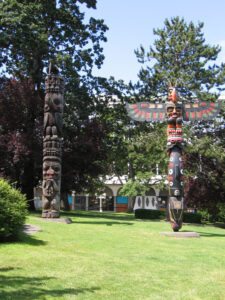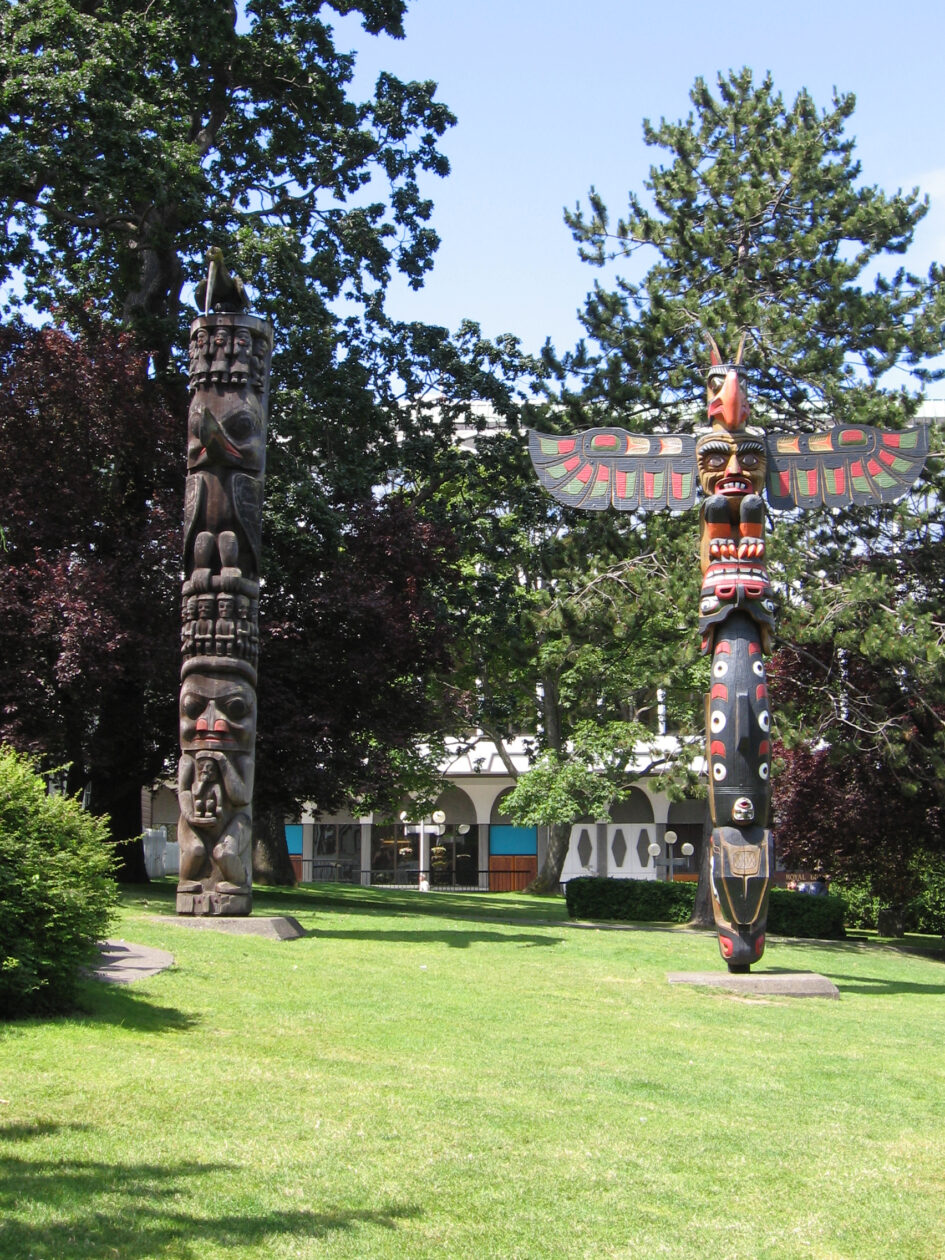During the week, we had a group presentation of our individual curatorial content, where we presented our curatorial proposals and got some feedback from our classmates and tutors. At the same time, we were able to find some ideas from other students’ curatorial proposals that we could use to improve our own curatorial projects.
I took inspiration from The Second Skin: Unstitched Narrative Threads to improve my own curatorial project. Whereas the student-designed exhibition symbolises the constraints and liberation of female identity through clothing, your exhibition focuses on the dismantling and transcendence of language, which also involves challenging symbolic systems. It analyses ‘clothing’ as a symbol. I think my exhibition could have analysed the limitations of language as a symbolic system in more detail, for example, by exploring ‘non-verbal communication’ systems in different cultures, such as totems, body language, tactile coding, etc. In exploring the limitations of language, I think my exhibition could have analysed the limitations of language as a symbolic system in more detail.
In exploring the limitations of language, we should not only focus on the dissolution of language, but also look into the communication systems that have already existed and transcended words. Across cultures, people have developed their own non-verbal communication systems to replace or supplement verbal expression. These systems are not merely substitutes for language, but are cognitively independent of language, and they constitute a more primitive and intuitive way of understanding the world. Cultural coding systems In many primitive societies and religious traditions, symbolic systems such as totems, carvings, and knotwork carry collective memory and social identity. Native American totem poles, for example, not only symbolise family history, but also serve a narrative function, with the order in which each totem is arranged telling an oral history. Then there is the Inca Knot: a coding system based on different colours, knots and lengths, used to record data and even historical events, and so on and so forth. These symbolic systems transcend speech and writing, constructing a non-linear, visual way of communicating. How did humans first store information? When language was not born, how did symbols record history? I could add a section to my exhibition, which could be named the ‘Memory of Symbols’ section. This section would focus on the symbolic systems of ancient cultures, showing the evolution of images, carvings, knots, and symbols. Some relevant art documentaries could be shown, inviting the audience to observe and try to decode these systems. At the same time, an interactive section can be set up, where the audience can try to collage their own ‘non-verbal diaries’ with knots, pictograms and patterns, and decode other people’s messages in a non-verbal way. For example, in the interactive experience area, the audience can be provided with symbols from different cultures to put together a ‘message’ and let other audience members try to decode it.

totem pole
In addition to cultural coding, this led me to reflect on the fact that the body is the most primitive medium of communication, and that many cultures have developed body language, dance, and other modes of communication: for example, the sign language of the North American Plains Indians, which is a language of cross-tribal communication independent of speech, and serves as a tool for communication that transcends tribal language differences. Examples include Talking Drums, a form of communication that mimics intonation and rhythm through the beat of drums to send messages to distant places, and is used for long-distance communication within communities. Therefore, I can in Language Audience will get away from words and speech in this section and explore in depth how humans rely on body, touch and rhythm to communicate.
After the PRESENTATION, my teacher gave me a FEEDBACK that there were some problems with my curatorial choice of address. The address I chose for my solo exhibition was a disused tube station, but this address was too broad and unspecific, and there is no tube station in Edinburgh, so the location was not realistic and practical enough. My teacher suggested that I could set the address to a certain tunnel, I think my teacher’s suggestion is very correct and my proposal is really not realistic enough. I think that the address could be set in an enclosed or semi-enclosed tunnel space in Edinburgh to ensure an immersive experience with enough spaciousness, security and to meet the operational needs of the exhibition. Ideally the tunnel should have a sense of history or signs of dereliction, such as an old railway tunnel or an abandoned pedestrian tunnel, to echo the theme of language fading. In terms of spatial ambience, the site should be relatively dim, allow artificial light to shape the exhibition, and have masonry or concrete walls to enhance sound reflection, echoing or absorbing properties, suitable for non-verbal communication experiments. The tunnels should be located away from major traffic arteries to avoid noise disturbances, and possess certain acoustic properties such as bone-conducted vibrations, echoes, or a completely muffled environment to enhance the perceptual experience of the exhibition. In addition, the venue should be open to the public or have the possibility of applying for an exhibition licence, be easily accessible to ensure that visitors can reach it easily, and meet infrastructural needs such as the installation of exhibition equipment, electricity supply and visitor circulation arrangements. The ideal venue should be metaphorical, symbolising the disappearance and reconstruction of language, and able to support different forms of non-verbal communication experiments, such as light and shadow projection, tactile interaction or echo experiments, so that the exhibition can become an experimental space for exploring the boundaries of communication. The exact location required me to conduct a site visit in conjunction with the requirements I had just summarised.
My classmate also questioned my curatorial proposal, she asked me how I could keep the environment inside the exhibition absolutely silent, I think this is also a point that I have not considered before, and I will take this into consideration in my re-location of the exhibition, how to create as much as possible an environment that is completely isolated from external sound.
This week, the artist collective of our group also had a meeting about our group’s curatorial project. In the first few weeks we decided on the name of our group, Sleepwalker, we identified the core values of Sleepwalker, and after discussing them with the group, we decided to focus on ‘multiple storylines’. In planning the exhibition, we realised that a traditional linear narrative was too monolithic and did not fit with the immersive experience we wanted to convey. Instead of guiding the audience along a fixed path, we wanted to create a more open and fluid exhibition model, allowing visitors to travel freely through different spaces and build their own journeys of discovery. In such an exhibition, there is no unique starting point, nor is there a fixed end point. Instead, there are multiple entrances, allowing each visitor to enter from different directions and discover different story clues along their own paths. This curatorial approach encourages a personalised experience, where each person’s trajectory is different and the content of the exhibition becomes multi-layered, dynamic and highly interactive.
When thinking about how to visualise this curatorial concept, we finally chose the kaleidoscope as the core concept of the exhibition. The charm of the kaleidoscope lies in its infinite variations, where each rotation generates a brand new pattern and no two visual experiences are exactly the same. This characteristic is highly compatible with the form of the exhibition we want to present – the exhibition space should be full of changes and uncertainties, and every exploration may lead the audience into a very different field of perception. Inspired by the image of a kaleidoscope, we designed an exhibition space with multiple entrances and exits, all leading to a central installation. When the audience enters the exhibition, they can independently choose the direction of their next step. The different exits do not lead to a fixed route, but rather to a scene full of unknowns, as if entering an ever-changing dream, where every turn may bring a completely new experience.
This curatorial approach emphasises the interactive nature of the exhibition, so that viewers are no longer passive visitors, but become creators of the dream journey. Their choices will shape their own viewing experience, and the meaning of the exhibition will continue to be generated as each person takes a different path. In this way, Sleepwalker not only constructs an immersive exhibition environment, but also creates a fluid experience that transcends traditional narrative approaches, making each entry and exploration unique and unpredictable.



Leave a Reply